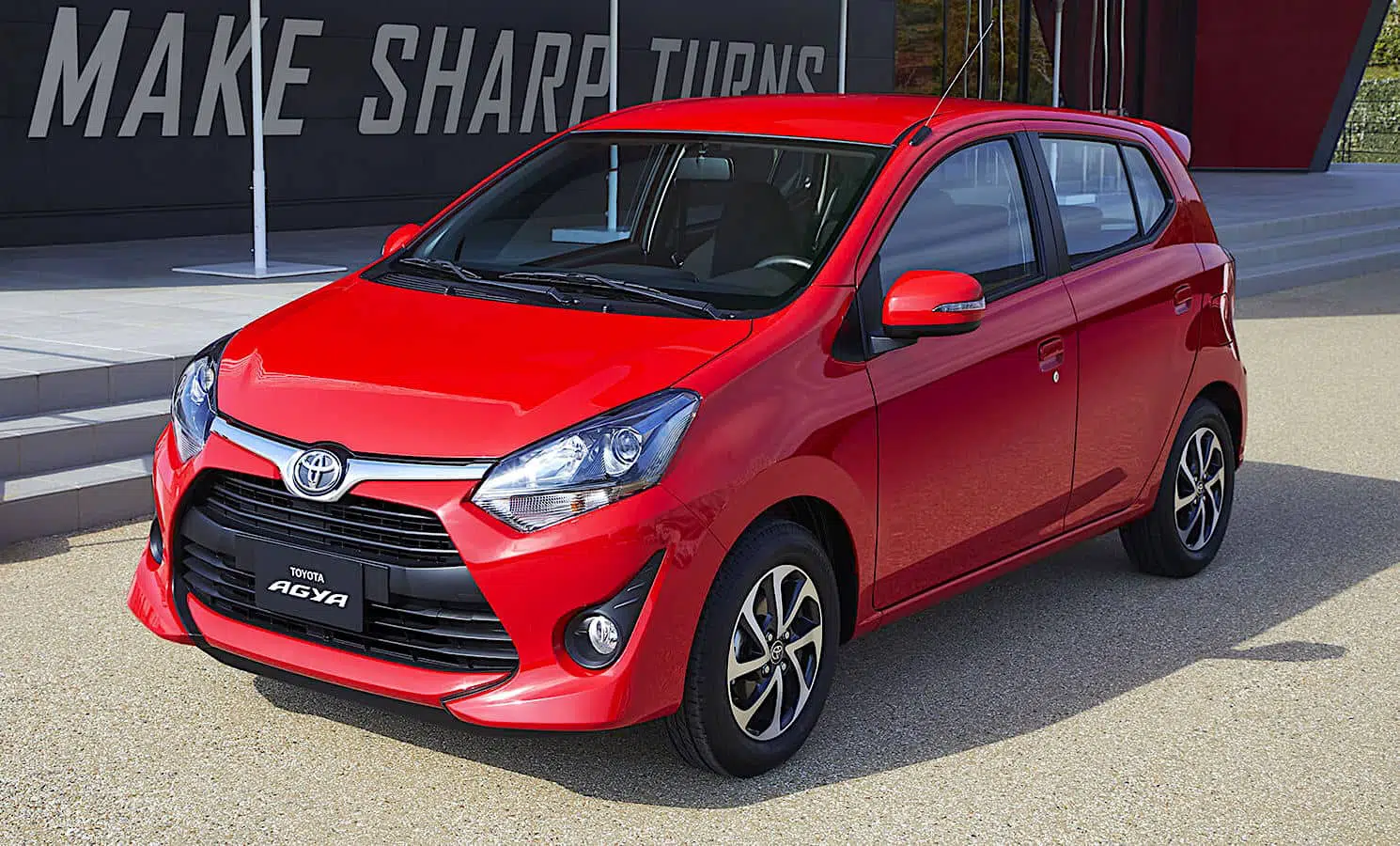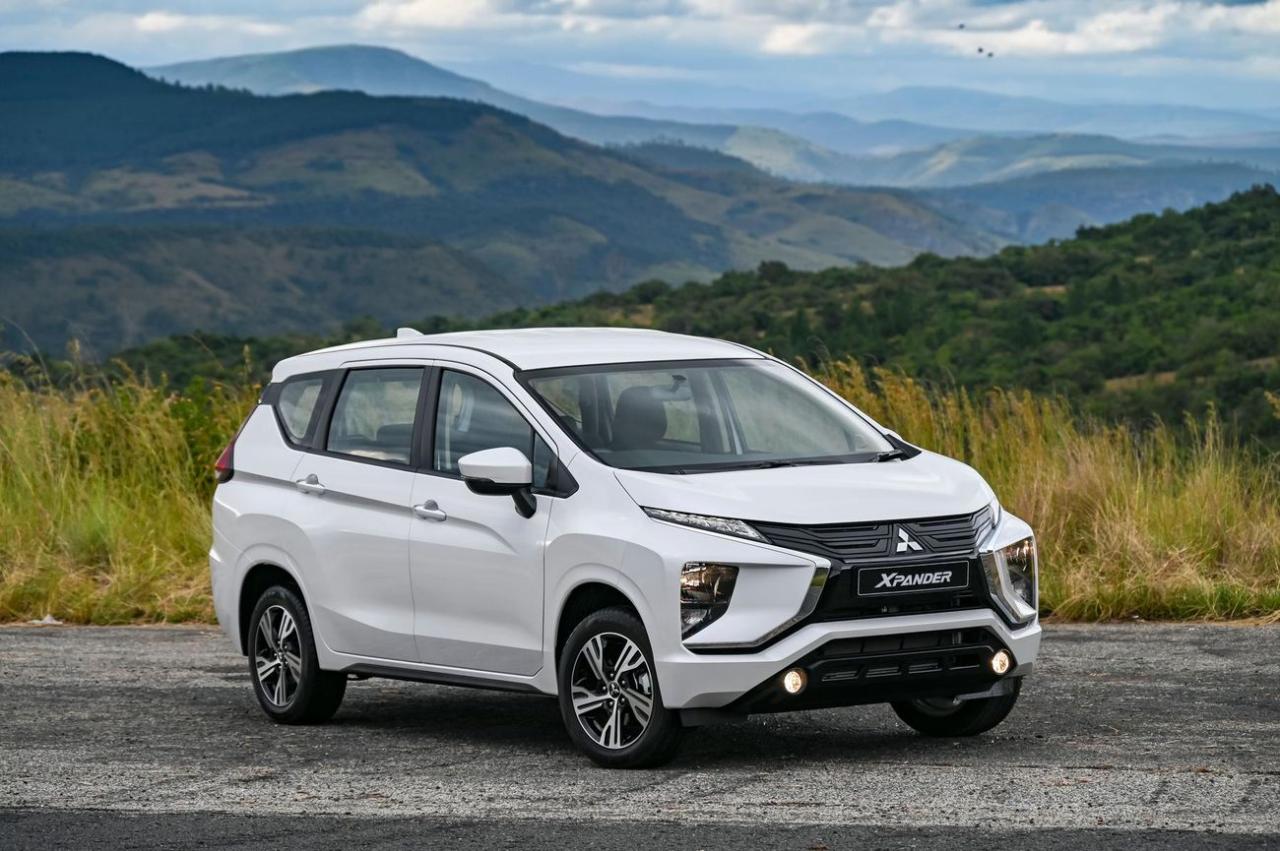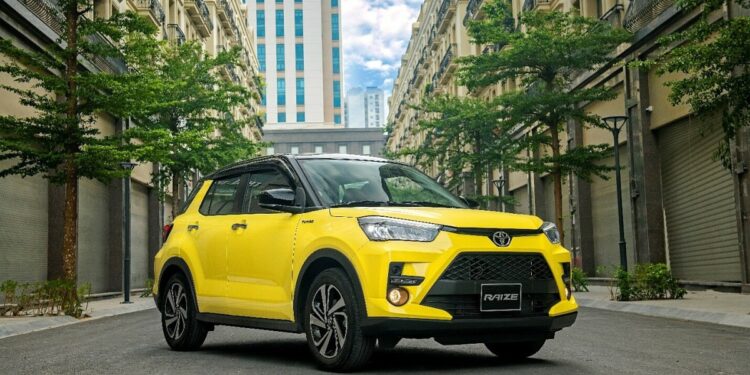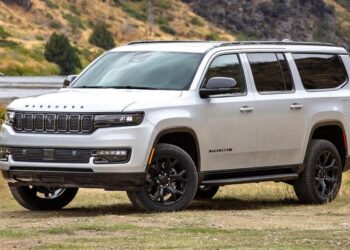The Indonesian automotive market is a dynamic and fiercely competitive landscape, perpetually evolving to meet the demands of a growing middle class and a burgeoning digital economy. For many Indonesian families, owning a car represents more than just transportation; it signifies status, convenience, and expanded opportunities. As we navigate through 2025, the focus on affordable cars remains paramount, driven by factors like disposable income levels, government regulations, and the increasing push for sustainable mobility. This isn’t just about the cheapest new vehicles; it’s about finding the best value, balancing initial purchase price with long-term running costs, fuel efficiency, reliability, and essential features that cater to the diverse needs of Indonesian consumers.
Factors Shaping Indonesia’s Car Market

Understanding affordability in Indonesia requires looking beyond just the sticker price. Several key factors intertwine to define what makes a car truly “affordable” and desirable in this unique market.
A. Economic Landscape and Consumer Purchasing Power:
- Growing Middle Class: Indonesia’s expanding middle class is the primary driver of automotive demand. As incomes rise, so does the aspiration for car ownership, particularly for new, reliable vehicles.
- Inflation and Interest Rates: Economic stability, inflation rates, and the prevailing interest rates on automotive loans significantly influence purchasing decisions. Lower interest rates make car financing more accessible.
- Disposable Income: The amount of money left after taxes and essential expenses directly impacts a consumer’s ability to afford car payments and related running costs.
B. Government Policies and Regulations:
- Low-Cost Green Car (LCGC) Program: The LCGC policy, introduced in 2013, has been instrumental in making cars more affordable. It provides tax incentives for manufacturers producing fuel-efficient vehicles with engines below a certain capacity (typically 1.2L for gasoline and 1.5L for diesel) and within a specific price bracket. This program has significantly boosted sales in the entry-level segment.
- Luxury Tax (PPnBM): Conversely, the progressive luxury tax on vehicles above certain engine capacities or price points makes larger, more powerful cars less affordable. Recent adjustments to PPnBM (e.g., based on carbon emissions rather than engine capacity alone) are subtly shifting the market towards cleaner technologies.
- Electric Vehicle (EV) Incentives: The Indonesian government is increasingly promoting EVs through various incentives, including lower luxury taxes, import duties, and even direct subsidies in some cases. While still relatively expensive, these policies aim to make EVs more accessible in the long run.
- Local Content Requirements: Policies promoting local manufacturing and high local content percentages (TKDN) help reduce import costs and generate local employment, contributing to overall affordability.
C. Infrastructure Development and Urbanization:
- Road Network Expansion: Ongoing infrastructure projects, including toll roads and urban bypasses, facilitate smoother travel, making car ownership more appealing, especially for inter-city commuting.
- Traffic Congestion: Paradoxically, increased car ownership contributes to congestion, particularly in major cities like Jakarta, Surabaya, and Bandung. This drives demand for smaller, more maneuverable cars or, increasingly, for public transport alternatives.
- Charging Infrastructure for EVs: The pace of EV adoption is heavily reliant on the expansion of public charging infrastructure, which is still in its nascent stages but growing rapidly.
D. Fuel Prices and Running Costs:
- Subsidized Fuel: The price of subsidized gasoline (Pertalite) and diesel significantly impacts the running costs for most affordable cars in Indonesia. Fluctuations in these prices directly affect consumer budgets.
- Maintenance and Spare Parts: The availability and affordability of genuine spare parts and reliable service networks are crucial considerations for Indonesian car buyers, influencing long-term ownership costs.
- Resale Value: The depreciation rate and strong resale value of certain models play a significant role in determining a car’s true affordability over its lifespan.
Key Segments for Affordability in 2025
When discussing affordable cars in Indonesia for 2025, several segments consistently emerge as top contenders, each catering to slightly different needs and preferences.
A. Low-Cost Green Car (LCGC) Segment:
- Core of Affordability: This segment remains the bedrock of affordable car ownership in Indonesia, specifically designed to be budget-friendly both in purchase price and running costs due to tax incentives.
- Characteristics: Typically 5-seater hatchbacks or MPVs (Multi-Purpose Vehicles) with engine capacities around 1.0L to 1.2L, offering good fuel efficiency.
- Target Audience: First-time car buyers, young families, and those prioritizing absolute affordability and low running costs.
- Key Players: Toyota Agya, Daihatsu Ayla, Honda Brio Satya, Daihatsu Sigra, Toyota Calya. These models consistently top sales charts in their respective sub-segments.
B. Small Multi-Purpose Vehicles (MPVs):
- Family Favorites: MPVs are incredibly popular in Indonesia due to their versatility, offering seating for 7 passengers and decent cargo space, making them ideal for families.
- Affordable Entry Points: While some MPVs can be expensive, many entry-level models offer compelling value for families needing more space than an LCGC.
- Key Players: Suzuki Ertiga, Mitsubishi Xpander, Honda Mobilio (though less dominant), and the lower variants of Toyota Avanza/Daihatsu Xenia.
C. Compact Hatchbacks:
- Urban Commuters: For individuals or small families living in urban areas, compact hatchbacks offer maneuverability, ease of parking, and stylish designs.
- Value Proposition: They often provide a good balance of features, fuel economy, and driving dynamics for their price point.
- Key Players: Honda Brio RS (non-LCGC variant), Suzuki Ignis, and occasionally offerings from other brands that fit this smaller footprint.
D. Entry-Level Compact SUVs/Crossovers:
- Growing Popularity: This segment is booming, appealing to buyers who want the rugged look and higher ground clearance of an SUV but at a more accessible price point than larger SUVs.
- Balancing Act: They often sacrifice some interior space for a more commanding driving position and fashionable design.
- Key Players: Honda WR-V, Toyota Raize, Daihatsu Rocky, Wuling Alvez. These models are increasingly becoming benchmarks for “affordable” SUVs.
E. Emerging Electric Vehicles (EVs):
- Long-Term Affordability (Post-Purchase): While the initial purchase price of EVs remains higher than ICE (Internal Combustion Engine) vehicles, government incentives and the significantly lower running costs (cheaper electricity, less maintenance) are making them increasingly affordable over their lifespan.
- Urban Focus: Most affordable EVs are compact, designed for urban commuting.
- Key Players: Wuling Air EV, Binguo EV, potentially new entrants from Chinese brands or local assembly efforts. These represent a new frontier for affordability, focusing on total cost of ownership.
Top Contenders for Affordability in 2025

Based on current market trends, government policies, and consumer preferences, here are some of the standout models likely to define affordable car ownership in Indonesia in 2025.
A. Toyota Agya / Daihatsu Ayla (LCGC Hatchbacks):
- Why they are affordable: Direct beneficiaries of the LCGC program, ensuring competitive pricing. Low engine capacity (1.0L or 1.2L) translates to excellent fuel efficiency and lower road tax.
- Strengths: Highly reliable, extensive after-sales network across Indonesia (Toyota and Daihatsu have vast reach), good resale value, easy to maneuver in city traffic.
- Target: First-time buyers, young professionals, small families seeking ultimate budget control.
B. Daihatsu Sigra / Toyota Calya (LCGC MPVs):
- Why they are affordable: The 7-seater LCGC segment is incredibly popular due to its unique combination of affordability and passenger capacity, crucial for multi-generational families.
- Strengths: Unbeatable value for money in terms of seating capacity, good fuel economy, practical interior, renowned reliability from Daihatsu/Toyota.
- Target: Families on a budget needing 7-seater versatility for daily commutes and occasional longer trips.
C. Honda Brio Satya (LCGC Hatchback):
- Why it is affordable: Another strong contender in the LCGC segment, offering Honda’s reputation for quality and driving dynamics.
- Strengths: Sporty design (for an LCGC), nimble handling, refined engine, good fuel efficiency, strong resale value.
- Target: Younger buyers, small families who appreciate a slightly more premium feel within the LCGC bracket.
D. Wuling Air EV / Binguo EV (Affordable EVs):
- Why they are affordable: Positioned as the most accessible EVs in the Indonesian market, benefiting from government incentives. Significantly lower running costs compared to gasoline cars.
- Strengths: Compact size ideal for urban navigation, quiet and smooth electric drive, zero tailpipe emissions, unique modern design.
- Challenges: Higher initial price than comparable ICE cars, range anxiety for longer trips, still-developing charging infrastructure, limited boot space (especially Air EV).
- Target: Urban dwellers, eco-conscious consumers, those looking for a second car for city commutes.
E. Honda WR-V / Toyota Raize / Daihatsu Rocky (Compact SUVs):
- Why they are affordable: These models provide the popular SUV aesthetic and higher ground clearance at a price point significantly lower than traditional mid-size SUVs.
- Strengths: Modern designs, often equipped with advanced safety features (like Honda SENSING or Toyota Safety Sense in higher variants), good fuel efficiency for their class, practical for urban and light-offroad conditions.
- Target: Young families, individuals desiring a stylish and versatile car with an SUV stance.
F. Suzuki Ertiga (Entry-Level MPV):
- Why it is affordable: Offers competitive pricing in the highly contested 7-seater MPV segment.
- Strengths: Comfortable ride, spacious interior, good fuel economy (especially with Smart Hybrid variants), reliable engine, easy to maintain.
- Target: Families needing practical and economical transport for seven, often a step up from LCGC MPVs.
G. Mitsubishi Xpander (Entry-Level MPV):
- Why it is affordable: While slightly pricier than some LCGC MPVs, its aggressive styling and strong brand presence make its entry variants compelling.
- Strengths: Bold exterior design, comfortable suspension, spacious cabin, renowned durability.
- Target: Families prioritizing distinctive design and a robust build, willing to pay a slight premium over other entry MPVs.
The True Meaning of Affordability
A truly affordable car in Indonesia for 2025 is one where the low purchase price is complemented by minimal long-term ownership costs.
A. Fuel Efficiency:
- Dominant Factor: With fluctuating fuel prices (even subsidized ones), a car’s fuel consumption is a primary concern for Indonesian buyers. LCGCs excel here.
- Hybrid Options: More hybrid variants (like Suzuki Ertiga Smart Hybrid) are becoming available, offering superior fuel economy, albeit at a higher initial cost.
- EV Advantage: Electric vehicles offer the lowest “fuel” cost, as electricity is significantly cheaper per km than gasoline, making them highly attractive for long-term savings.
B. Maintenance and Spare Parts Availability:
- Dealer Network: Brands with extensive dealership networks (Toyota, Daihatsu, Honda, Suzuki) offer easy access to authorized service centers and genuine spare parts, which translates to peace of mind and often lower long-term maintenance costs.
- Local Production: Vehicles with high local content often have more readily available and cheaper spare parts.
- Service Costs: Consider the average cost of routine servicing and major component replacements.
C. Resale Value:
- Strong Brands: Models from reputable brands (Toyota, Honda, Daihatsu) consistently command higher resale values in Indonesia due to their perceived reliability and popularity.
- Demand: Models that are perennially in high demand tend to depreciate slower.
- Maintaining Condition: Regular maintenance and careful ownership also contribute significantly to maintaining resale value.
D. Insurance Costs:
- Comprehensive vs. TLO: Understanding the difference between comprehensive (all-risk) and Total Loss Only (TLO) insurance, and choosing the appropriate coverage, impacts annual costs.
- Vehicle Value: Insurance premiums are typically based on the vehicle’s market value, so more affordable cars generally have lower insurance costs.
E. Road Tax (Pajak Kendaraan Bermotor – PKB):
- Engine Capacity Impact: PKB is calculated based on the vehicle’s selling price and engine capacity. LCGCs benefit from lower engine capacities, resulting in lower annual tax burdens.
- EV Incentives: Some regions offer reduced or waived PKB for electric vehicles as an incentive for adoption.
Making the Smart Purchase in 2025
For Indonesian consumers looking for an affordable car in 2025, a strategic approach is essential to secure the best value.
A. Define Your Needs Clearly:
- Capacity: How many passengers do you regularly carry? (5-seater hatchback vs. 7-seater MPV).
- Usage: Primarily urban commuting, occasional long trips, or a mix?
- Budget: Not just purchase price, but also monthly loan payments, fuel, insurance, and maintenance.
B. Research Extensively:
- Online Reviews: Consult Indonesian automotive websites, forums, and YouTube channels for reviews and comparisons.
- Test Drives: Always test drive multiple models to assess comfort, driving dynamics, and features personally.
- Visit Dealerships: Gather quotes, inquire about promotions, and understand after-sales service packages.
C. Explore Financing Options:
- Bank Loans: Compare interest rates, down payment requirements, and tenor options from various banks and financial institutions.
- Manufacturer Financing: Some automakers offer their own financing schemes, which might include special deals.
D. Consider Long-Term Costs:
- Fuel Efficiency Data: Look up official fuel consumption figures and real-world owner reports.
- Service Schedules: Understand the recommended service intervals and estimated costs.
- Parts Availability: Ask about the availability and cost of common spare parts.
E. Don’t Overlook Used Cars:
- Depreciation Advantage: A well-maintained used car, especially one or two years old, can offer significant savings as it has already absorbed the initial depreciation.
- Reliable Models: Focus on used versions of models known for their reliability and strong resale value.
- Inspection: Always get a used car inspected by a trusted mechanic before purchase.
Conclusion:
The landscape of Indonesia’s affordable cars in 2025 is vibrant and diverse, catering to a wide spectrum of needs and budgets. The market is not just about bare-bones transportation; it’s about smart value, blending competitive pricing with fuel efficiency, proven reliability, and increasingly, modern features and safety technologies. From the tax-incentivized LCGCs that form the backbone of entry-level ownership to the increasingly accessible compact SUVs and the trailblazing affordable EVs, consumers have more choices than ever before.
Making an informed decision means looking beyond the initial purchase price to consider the total cost of ownership, including fuel, maintenance, and resale value. As Indonesia continues its journey of economic growth and urbanization, the demand for practical, efficient, and truly affordable vehicles will remain a driving force, ensuring that the dream of car ownership remains within reach for many more families across the archipelago. The road ahead for affordable vehicles in Indonesia is paved with innovation and increasingly green choices.














